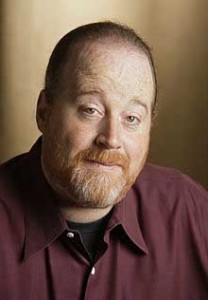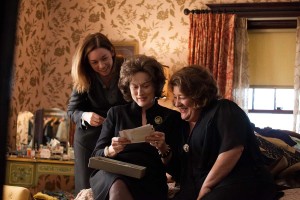
Based upon the three-hour play by Tracy Letts, August: Osage County brings together an ensemble of top actors to tell the story of strong-willed women brought by tragedy back to their Oklahoma home and the world of their drug-addicted, dysfunctional mother played by Meryl Streep. Editor Steve Mirrione admitted he is drawn to dialog-driven material. One of the challenges in converting the play into a film was retaining all the subtleties and great language, while paring down the story to a condensed movie length. The tightening process began in the screenwriting by re-writing scene-by-scene – then reading through and determining whether it felt like anything was missing – and continued in the editing, after the film was shot.
“In the course of putting the movie together, once you see something and it’s no longer a written experience, there are certain things that come into focus,” explained Mirrione. “Partly because of Julia Roberts’ performance, partly because of the way the screenplay was structured, Barbara became much more central, became the point of view of the movie itself.” Without the support of elements in the play that were longer in the script, certain scenes with the daughter and housekeeper were reduced in importance. These scenes also interrupted the flow of the movie and were consequently omitted in the film edit. There were also the instances where lines were removed because an actor in the film was able to express the essence of those lines non-verbally. Ultimately though, Mirrione was happy that they were able to retain much of the naturalistic dialog from the play in the film.
With a six-week schedule, resources in terms of the number of shooting days were limited, so director John Wells relied upon acting talent with a theatrical as well as film background to show up prepared on the day. “We didn’t have the luxury a lot of movies have. We had one day to shoot, where on another movie, you might have a week so you can really take your time to get it perfect,” shared Mirrione. “Having the backbone of Meryl and the performance that she brought to the part from day one, really made that lack of resources disappear. They all came at it like gangbusters. They were really remarkable.” Despite the lack of resources, Mirrione still had a tremendous amount of material to shape.

The editor had never worked with Wells. Having done all of George Clooney’s films, he came into the project through Clooney and Grant Heslov, the film’s producers. “When I saw that this was in the pipeline, I called them up and said, ‘I don’t know if he has somebody or not, but I am definitely interested.’ Happily he was interested in having me on board,” said Mirrione.
As for his first collaboration with Wells, Mirrione credits the director with being calm and levelheaded. “This is a big cast with a lot of big personalities. He was able to keep his focus on performance and the story and not have anything rattle him,” Mirrione revealed. Perhaps most impressive is the fact that Wells was able to work his way through the “terrifying and daunting process” of shooting the 20-page dinner table dialog scene in three days.
The dinner scene was also the biggest challenge for Mirrione to edit. Although the overall flow of the scene was driven by Streep’s performance, Mirrione had to keep track of all ten actors and their reactions. In addition, most scenes run around two minutes long, so the shear amount of footage for the dinner was ten times as much as an average scene. To tackle the challenge, Mirrione had his assistants put together clips for every sentence or phrase in the scene. That allowed the editor and director to evaluate each line and decide where the focus would be placed for each moment in the sequence.
“There is a rhythm to a scene like that. The challenge is an exponential challenge because for everything that comes before and after a moment, you have to make sure you are shaping it so that everything lands in just the right spot. One false move three minutes in can derail something that is happening seven or eight minutes into the scene,” explained Mirrione.





